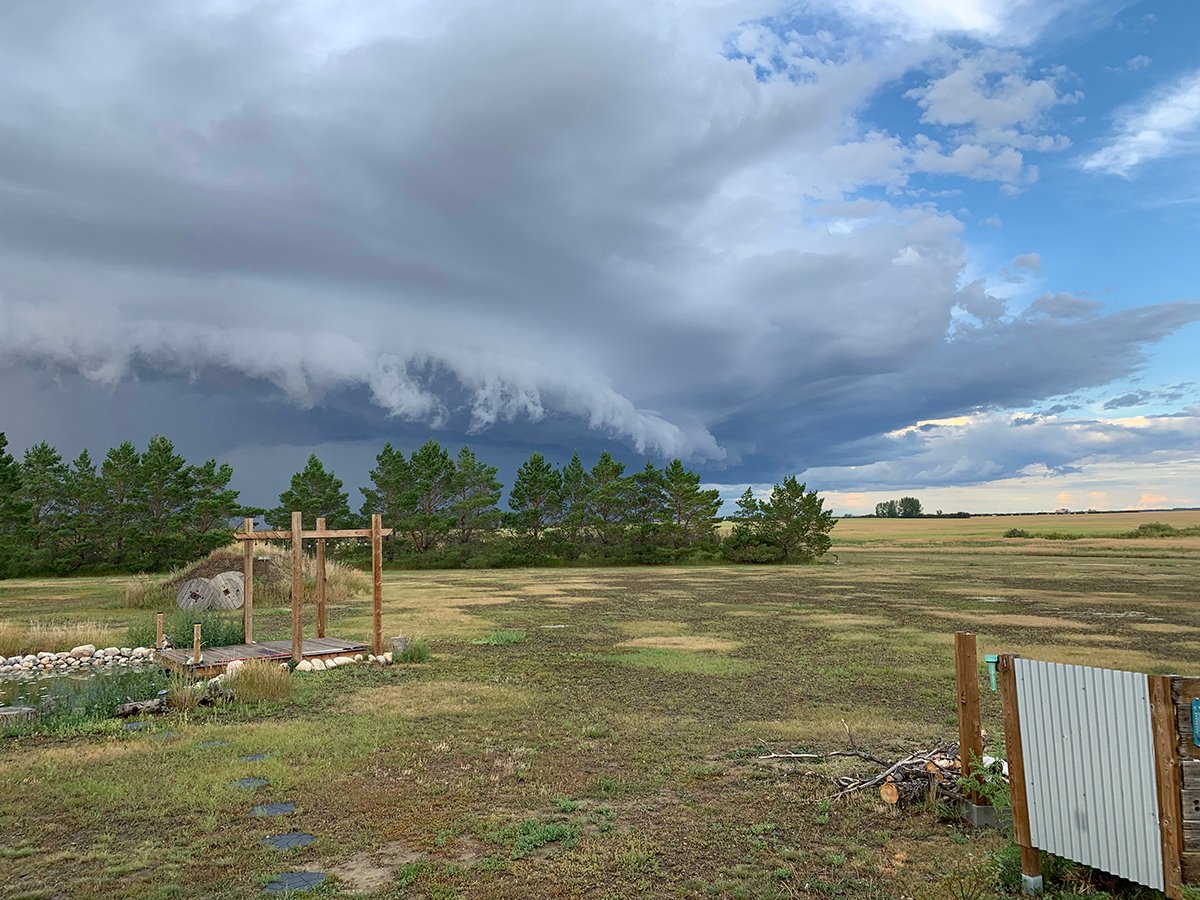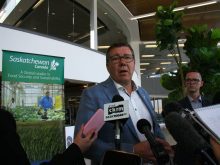A significant amount of fusarium-contaminated grain in Manitoba means swine producers in the province should be cautious when buying feed grain.
“The concern with fusarium-contaminated grain is that it reduces feed intake in pigs,” said Jim House of the department of animal sciences at the University of Manitoba.
Fusarium head blight is a fungal infection affecting cereal crops, primarily wheat and barley. To develop, the disease needs rainfall before flowering and heat and humidity during the flowering season. Chalky, shrivelled kernels signal the disease.
Fusarium graminearum is the fungal strain of most concern to swine producers. The fungus can produce a dangerous mycotoxin in the grain called deoxynivalenon, or DON.
Read Also

Storm dynamics and extreme rainfall
Besides moisture, instability and orographic lift, the next biggest factor that contributes to heavy or extreme rainfall is storm dynamics.
“There’s some suggestion that it (the mycotoxin) influences the drive for the pigs to consume feed by changing some of the neurochemistry that makes them want to consume feed,” said House.
David Kaminsky, plant pathologist with Manitoba Agriculture, said weather in the province made fusarium more prevalent this year.
It takes only a quarter of a percent of fusarium damaged kernels in a sample to downgrade No. 1 wheat to No. 2.
“Fusarium has had a significant impact on this year’s crop. Harvest survey, conducted by the Canadian Grain Commission, suggest that it’s the No. 1 downgrading factor for hard red spring and levels were higher in winter wheat than they have been in quite some time,” said Kaminsky.
Pigs can eat grain contaminated with the DON mycotoxin, but producers should follow Canadian Food Inspection Agency suggestions for rations, said House.
“We shouldn’t be feeding more than one part per million in the final ration to pigs of deoxynivalenon, the mycotoxin,” House said.
Literature regarding DON, also known as vomitoxin, said when fed at high levels it causes pigs to vomit. House added it is difficult to predict exactly how pigs would respond to higher or lower levels of DON in the final ration.
“We’ve gone up in some studies as high as four parts per million and have not seen any significant impact on feed intake or performance in our grow-finisher pigs.”
In another study, House said he noticed gilts being fed up to two parts per million took a few extra days to reach market weight. He said swine producers had several options to consider when buying feed.
“Now one of the solutions you have available to you is to mix the contaminated grains with clean grains to get down to below the one part per million level to try to dilute the problem away,” House said.
Pearling feed is a newer way to reduce fusarium contamination. Since the outer portion of the grain contains the most toxins, pearling or polishing the outside of the grain would remove significant amounts.
“The problem has been to identify a process that is price competitive and that’s the challenge now.”
House said the cost of pearling combined with the price of contaminated feed must be competitive with the cost of clean seed before the process is used.
“Alternatively, you can try to source clean grains from farther west, Alberta, Saskatchewan, but the disease is spreading west. So, the likelihood of being able to rely on that in the future is diminishing.”
Andy Tekauz, a plant pathologist with the Cereal Research Centre in Winnipeg, said the problem is mostly confined to Manitoba.
“The general thinking based on surveys that have been done during the last 10 years in all of the provinces is that, compared to Manitoba, the severity of fusarium head blight in Alberta is much, much less and the same situation occurs in western Saskatchewan.”
Portions of southeastern Saskatchewan are the most affected by fusarium. Penny Pearse, plant pathologist with Saskatchewan Agriculture, said contamination levels in the province appear to be lower this year.
“In 2005, our preliminary results show that severity values are the lowest that they have ever been in the last few years,” said Pearse.
“We are at a benefit because for the most part we have not seen levels of Saskatchewan anywhere near the Manitoba situation.”
Pearse said trace levels of fusarium have been found in about one third of crops so far. She said the levels are probably lower this year because although the spring was wet, it was dry during the flowering period when the plants are susceptible to fusarium.
Initial results look positive, but Pearse said the final tally on contaminated grains would be finished by December. She said Saskatchewan swine producers should be aware.
“I guess some initial signs would be feed refusal, you know, poor weight gain and things like that.”
House said poultry and ruminant animals are less sensitive to the DON mycotoxin. Agriculture Canada recommends no more than five parts per million of DON contaminated feed for poultry, cattle and sheep.














